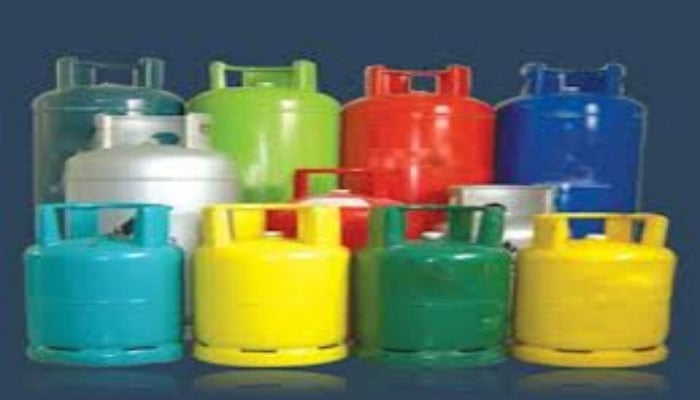Govt may increase gas tariff by 10-22pc on November 1
ISLAMABAD: The government is set to increase the local gas tariff by 10-22 percent by November 1, 2021 as per the undertaking extended to the IMF.
The Fund wants the government to reduce the circular debt in local gas sector, which has risen to Rs554 billion. In case the amount of Rs104 billion is added, which has not been recovered from domestic consumers against the use of costly RLNG in the last three years, then the total circular debt stands at Rs658 billion as of today. If the government, because of political considerations, allows the diversion of RLNG to domestic sector in three months of the winter season, then the circular debt is feared to swell up to Rs748 billion. The Fund also wants the government to reflect the same increase in sale gas price whatsoever the OGRA determines.
“We have worked out three scenarios for hike in gas tariff, which include 10 percent, 15 percent and over 20 percent for decision makers to approve with effect from November 1, 2021,” top officials at the Energy Ministry told The News. Pakistan's financial team, headed by Adviser to PM on Finance and Revenue, has been trying hard to make the IMF program operational in Washington and in confidence building measures, the government has already increased the base electricity tariff and POL prices to a large extent. Now is the turn of gas price increase, which the government is making its mind to hike from November 1, 2021.
“The Sui utilities are facing Rs50 billion shortfall in the current financial year, which includes Rs30 billion by Sui Northern and Rs20 billion by Sui Southern. If the minimum 10 percent gas tariff gets increased, then the loss of Sui Southern will be coped but only 50 percent loss of Sui Northern will be bridged. And if gas tariff is increased by 22 percent, then the loss being faced by Sui Northern will be dealt with. Since uniform tariff is applied across the country for both the gas companies, it is up to the decision makers what scenario among the three ones they adopt to enforce the gas tariff increase."
In the last three years of the incumbent government, the government increased the gas tariff three times, 35 percent between August 2018 and July 2019 and 27 percent between July 2019 and September 20 and 5 percent hike from September 20 onwards. And the new increase by 11-22 percent will be the fourth in a row, which will be effective from November 1, 2021.
The officials said that the unaccounted for gas (UFG) in Sui Northern has been reduced to 8.5 percent from 12 percent and in the Sui Southern system, it has been reduced to 15.5 percent from 17 percent, but the UFG volume is still at the higher side.
And in the head of unaccounted for gas (UFG), in the Sui Southern jurisdiction, the local gas of 225 mmcfd (million cubic feet gas per day) was wasted as per the OGRA determination for the year 2020-21.
According to the determination, in the whole year, gas of 45 billion cubic feet worth Rs25 billion gets wasted in the head of UFG in the system of Sui Southern. And out of Rs25 billion, the impact of Rs13 billion has been passed on by OGRA to the masses and Rs12 billion loss will be borne by Sui Southern. Likewise, in the system of Sui Northern, per year loss of gas because of UFG has gone up to 28 bcfd worth Rs16 billion. OGRA allowed the Sui Northern to pass on the losses of 23 bcfd with impact of Rs12 billion to end consumers and the rest of 5bcfd of Rs4 billion will be borne by the Sui Northern.
The local gas production has squeezed to 2.8 bcfd and every year, gas is being depleted by 9 percent, which is why the government has decided to place the ban on new gas connections and development of new gas schemes. “We have also halted the process of giving gas supply connections to already-approved gas development schemes and to this effect, the Petroleum Division will soon write to the gas utilities -- Sui Northern and Sui Southern to place moratorium on new connections and new gas development schemes.”
Right now, in the Sui Northern system alone, there are 2.8 million connections lying pending and if those are connected, the utility needs to provide 250 mmcfd gas. For new gas development schemes, there is a need to provide gas of 200 mmcfd, which is not possible because of fast dwindling gas production across the country.
-
 ASAP Rocky Recalls 'embarrassing' First Meeting With Rihanna
ASAP Rocky Recalls 'embarrassing' First Meeting With Rihanna -
 Archie, Lilibet’s Chances At Meeting King Charles Get Promising Update: Here’s Why
Archie, Lilibet’s Chances At Meeting King Charles Get Promising Update: Here’s Why -
 Claire Foy Shares Rare Views On Typecasting Amid New Gig
Claire Foy Shares Rare Views On Typecasting Amid New Gig -
 Britney Spears Raves About Madonna In New Social Media Post
Britney Spears Raves About Madonna In New Social Media Post -
 Hailey Bieber Shares Sweet Snap Of Husband And Baby
Hailey Bieber Shares Sweet Snap Of Husband And Baby -
 Therapist Killed In Office As Former Client Launches Knife Attack
Therapist Killed In Office As Former Client Launches Knife Attack -
 Gaten Matarazzo Brands 'Stranger Things' Final Scene 'nerve-racking'
Gaten Matarazzo Brands 'Stranger Things' Final Scene 'nerve-racking' -
 David Beckham Speaks Out After Son Brooklyn Beckham's Shocking Post
David Beckham Speaks Out After Son Brooklyn Beckham's Shocking Post -
 Sophie Turner Gets Candid About 'imposter Sydrome' Post 'GOT'
Sophie Turner Gets Candid About 'imposter Sydrome' Post 'GOT' -
 When Nicola Peltz's Boyfriend Anwar Hadid Found Solace In Dua Lipa's Arms
When Nicola Peltz's Boyfriend Anwar Hadid Found Solace In Dua Lipa's Arms -
 Claire Foy Reveals Rare Impact Of 'The Crown' Gig On Career
Claire Foy Reveals Rare Impact Of 'The Crown' Gig On Career -
 Megan Thee Stallion Teases New Music On The Way
Megan Thee Stallion Teases New Music On The Way -
 Blonde Kate Stuns In Photos With Prince William During Rare Joint Engagement
Blonde Kate Stuns In Photos With Prince William During Rare Joint Engagement -
 Kate Gosselin Reveals Harrowing Moment Thief Nearly Took Her Down
Kate Gosselin Reveals Harrowing Moment Thief Nearly Took Her Down -
 Billy Bob Thornton Weighs In On Contrast To 'Landman' Role
Billy Bob Thornton Weighs In On Contrast To 'Landman' Role -
 Amanda Holden May Swap Position To Different Reality Show: See Which
Amanda Holden May Swap Position To Different Reality Show: See Which




